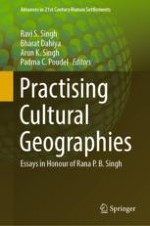2022 | Book
Practising Cultural Geographies
Essays in Honour of Rana P. B. Singh
Editors: Dr. Ravi S. Singh, Dr. Bharat Dahiya, Dr. Arun K. Singh, Padma C. Poudel
Publisher: Springer Nature Singapore
Book Series : Advances in 21st Century Human Settlements
